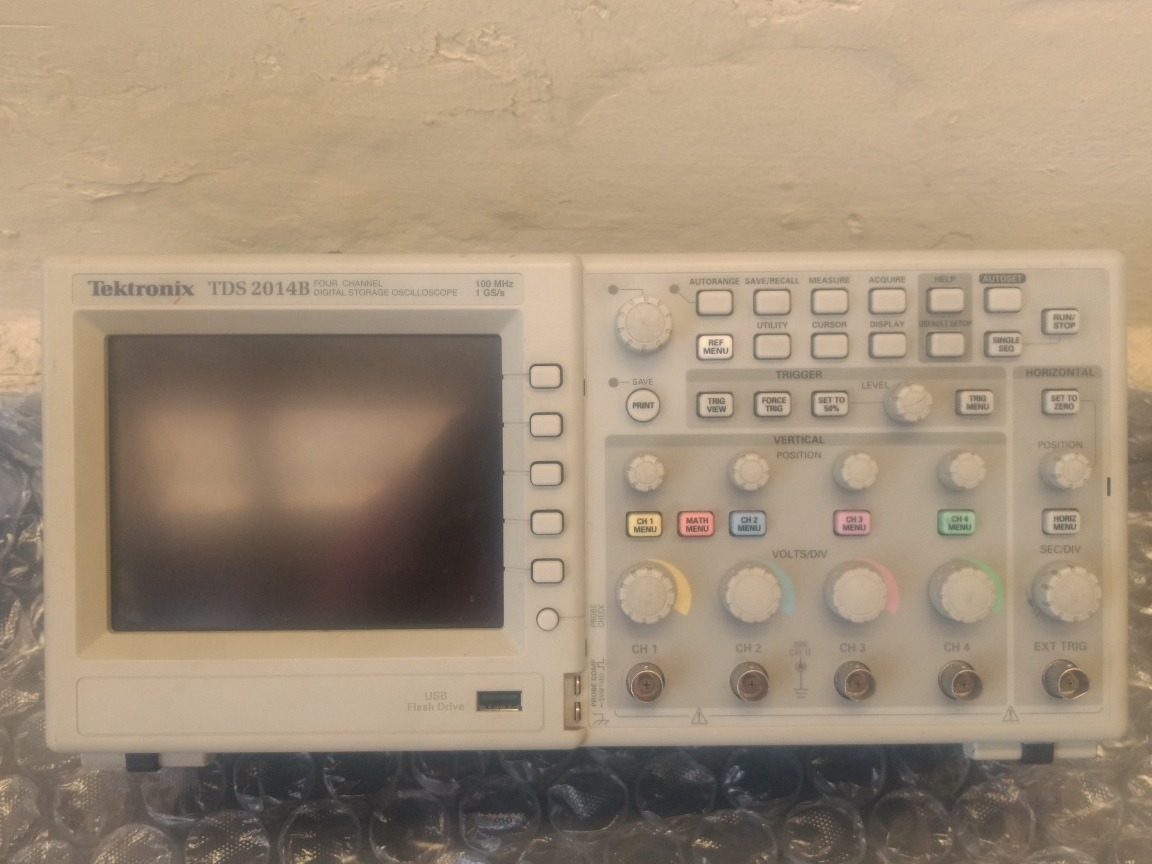

Know your Test GearĪC and DC coupling modes are a great example of why it’s important to have a solid understanding of your test gear. So, having a slower roll off means an overall smoother, more consistent frequency response. Anyone who’s implemented a hardware filter has experienced this design trade off.

It’s worth noting that it would be possible to make the filter response steeper, but a steeper cutoff leads to a lumpier frequency response. If you try to measure signals below this range, you’ll have signal attenuation or overshoot. We recommend that you use AC coupling only for sine waves above 100 Hz and square waves above 200 Hz. To get more specific, you shouldn’t use AC coupling mode to view signals near the filter’s cutoff frequency. A little bit of offset or scaling might be required, but they can easily measure AC signals while in DC coupling mode.
#Osciloscopio tektronix multisim 12 full
Oscilloscopes are designed to have a flat, consistent frequency response over the full bandwidth range.


There’s a dramatic difference! The square wave we see in DC coupling mode is the actual signal, switching to AC warps the signal into something very different. This could be a 5 V power rail, and we want to look at the ripple (Figure 5):įigure 10: In AC coupling, the waveform is warped. They used one channel zoomed out with DC coupling mode to watch the rail turn on, and a second channel at a more sensitive time/div setting with AC coupling mode to observe the ripple.įor example, here’s a 1 kHz, 50 mV peak-to-peak sine wave riding on a 5 V DC offset. The problem was that they couldn’t zoom in on their ripple and watch the rail turn on. I saw one situation where an engineer needed to watch a power rail turn on and then immediately see the ripple on the rail. It’s not intended to remove non-zero, low frequency components. This could be something like a power rail or a signal with a very low frequency drift. Use AC coupling if you have a high frequency signal with a DC offset. Keeping this in mind, there are times when you should and shouldn’t use AC coupling. To learn more about the ins and outs of bandwidth and why this occurs, check out the article “ What is Bandwidth? How Much Do You Need?” A 100 Hz oscilloscope can still see a 150 Hz sine wave, it’ll just be attenuated according to the roll-off characteristic of the oscilloscope. Why is this happening? Because bandwidth isn’t as simple as we sometimes like to think. This filters out all the DC components.įigure 4: The same 1 V sine wave, but in DC coupling shows the proper 1 Vpp When you enable AC coupling on an oscilloscope channel, you’re switching in a high-pass filter on the channel’s input signal path. DC coupling allows you to see all signals from 0 Hz up to the max bandwidth of your scope. In the “coupling menu” you can switch between DC coupling and AC coupling. There’s often a 20 MHz bandwidth filter, probe settings, input impedance settings, and coupling settings. In the channel menu of your oscilloscope, you can turn on/off a couple of different settings. An oscilloscope’s offset range is dictated by the volt/div setting, so getting a usable view of the ripple is often impossible in DC coupling mode. To see this ripple, you need a sensitive volt/div setting and a huge offset.
#Osciloscopio tektronix multisim 12 for free
keep learning, sign up for free oscilloscope courses! What you really care about is the AC component around 12V. When should you use AC coupling? The Reason for AC Coupling on an OscilloscopeĪC coupling is intended for AC signals with a large DC offset.įor example, what if you want to look at ripple on a 12V power rail? You don’t really care about seeing the 12V DC component. I’ve heard this comment before, and it’s dead wrong: “ You should use AC coupling when looking at an AC signal.” Following this false AC coupling adage is an easy way to make some very wrong measurements.


 0 kommentar(er)
0 kommentar(er)
